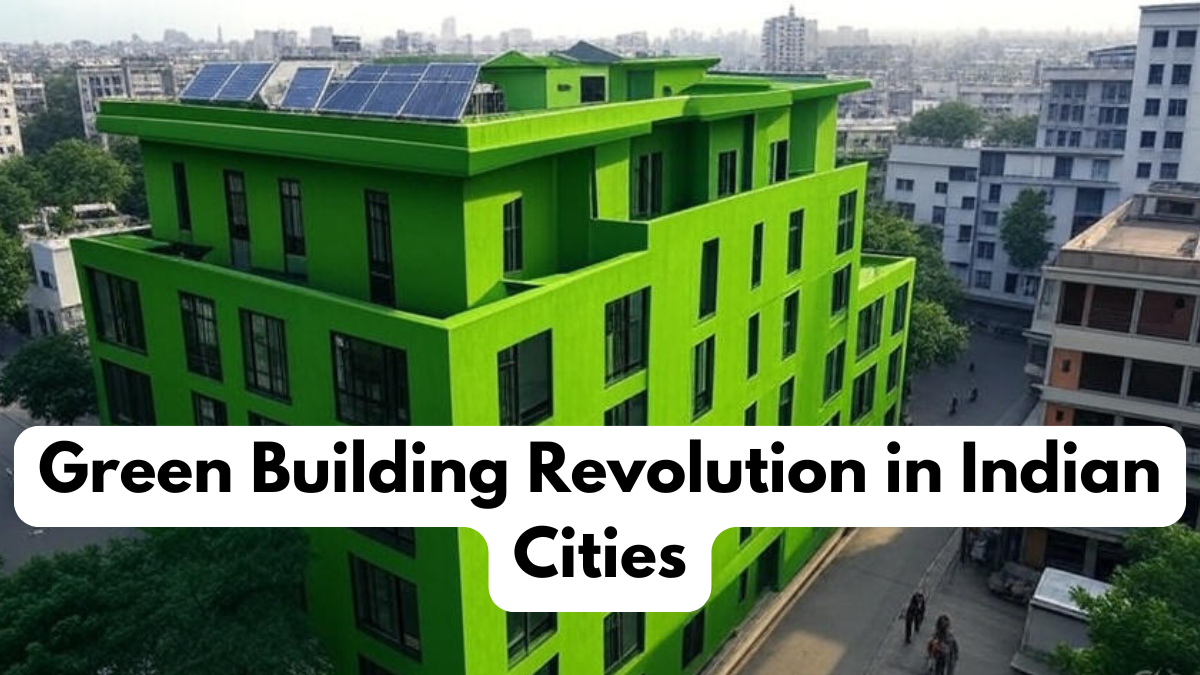Green building India is no longer just a concept; it has become a reality shaping the skylines of urban areas. With rapid urbanization and rising pollution levels, the demand for eco-friendly infrastructure has never been greater. Cities are embracing sustainable designs that conserve energy, reduce water usage, and minimize waste. This transformation is not just about constructing modern buildings—it is about building sustainable cities that can meet the challenges of climate change and growing populations.

Why Green Building Matters in India
India is one of the fastest-growing economies, and its cities are expanding at an unprecedented rate. Unfortunately, this growth has also led to increased carbon emissions, higher energy consumption, and environmental stress. Green building India initiatives aim to tackle these issues by incorporating renewable energy, natural ventilation, and efficient resource management into construction. By doing so, the country is not only protecting the environment but also creating healthier living spaces for urban citizens.
The rise of sustainable cities shows how urban planning is shifting towards long-term resilience rather than short-term growth. These cities focus on improving quality of life while reducing ecological footprints.
Key Features of Green Buildings
The idea of green building India is centered on reducing environmental impact without compromising comfort and efficiency. Some of the most common features include:
- Solar panels for renewable energy.
- Rainwater harvesting systems.
- Waste recycling and composting units.
- Smart lighting and ventilation systems.
- Use of eco-friendly construction materials.
These features help cities transition toward being sustainable cities where energy and resources are managed responsibly.
Comparing Traditional and Green Buildings
The difference between conventional construction and green building India projects is stark. Traditional designs often focus only on cost and speed, while green buildings prioritize environmental balance. The following table highlights the contrasts:
Feature |
Traditional Buildings |
Green Buildings (India) |
|---|---|---|
Energy Consumption |
High due to inefficient systems |
Reduced through solar and smart tech |
Water Usage |
Minimal conservation methods |
Rainwater harvesting and recycling |
Materials Used |
Cement, steel, synthetic paints |
Eco-friendly and recycled materials |
Long-term Costs |
Higher operational costs |
Lower maintenance and energy bills |
Contribution to Cities |
Adds to pollution and congestion |
Supports sustainable cities goals |
Challenges in Building Sustainable Cities
While the growth of green building India is promising, several challenges remain. Many developers hesitate to invest in green construction due to higher upfront costs, even though long-term savings are significant. Lack of awareness among homebuyers and limited government incentives also slow progress.
For India to create truly sustainable cities, a strong push is required in terms of policies, subsidies, and public education. Builders, policymakers, and citizens must work together to embrace eco-friendly designs as the norm, not the exception.
Conclusion
The movement of green building India reflects a major step toward environmental responsibility and urban innovation. By combining modern technology with eco-friendly practices, cities are building a path toward cleaner air, lower energy bills, and healthier lifestyles. More importantly, this trend aligns perfectly with the vision of sustainable cities, where growth does not come at the expense of nature. If supported by government policies and citizen awareness, India can lead the way in creating an urban future that is both progressive and sustainable.
FAQs
What are the benefits of green building India projects?
They reduce energy use, save water, lower maintenance costs, and create healthier living spaces.
How do green buildings help in creating sustainable cities?
By promoting eco-friendly construction and efficient resource management, they contribute to the long-term vision of sustainable cities.
What are the challenges of green building in India?
High initial costs, lack of awareness, and limited incentives are the biggest challenges slowing the adoption of green building India.
Are green buildings affordable for average citizens?
While initial costs can be higher, long-term savings in energy and maintenance make them cost-effective in the long run.
Click here to learn more